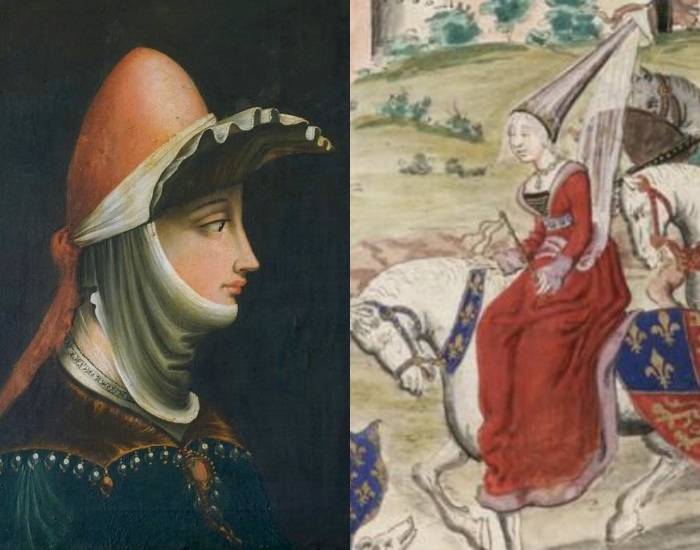Women in power: Matilde di Canossa and Isabella of France

The Notepad of Michael the Great
With the rule of the single heir, firstborn and male, introduced in the first decades of the eleventh century, the wife of the king – as the mother of the future sovereign – can finally boast the royal insignia. The birthright, sanctioned to put an end to fratricidal rivalries over the division of the hereditary axis, is contemporary with the emergence of a dynastic conception of power. The growing emphasis placed on the lineage of the bride and the legitimacy of the offspring will follow. Only Germany lacked a corpus iuris for the designation of the king and for the succession to the throne. Before 1356, they decided the balance of power between the electoral princes. On their mandate, Agnes, daughter of the Duke of Aquitaine and widow of Emperor Henry III (1017-1056), will rule for six years as fiduciary agent for her son, the future Henry IV. Fearing a weakening of the imperial power, in 1062 she was deposed by the archbishops Annone of Cologne and Adalbert of Hamburg.
Contemporary of Agnese is Matilde di Canossa (1046-1115), the most legendary female personality of her time . Absolute protagonist of the struggle for investitures, which pitted popes and Germanic emperors on the problem of episcopal appointments, he will split European public opinion. For her support for Pope Gregory VII, she will be compared by the Ghibellines to the impious Jezabel of the Old Testament, by the Guelphs to the Virgin Mary. Moreover, as Jacques Le Goff wrote (“Men and women of the Middle Ages”, Laterza, 2013), the Marian cult endowed women with a status cloaked in a religious aura, even to holiness. In the "Vita Mathildis", however, the monk Donizone describes her as a warlike leader, a kind of Pantasilea in front of which Oberto, Marquis d'Este and head of the imperial league in the siege of Sorbara (1084), had fled trembling " complaining like a nun ”.
In the "Liber de Vita Christiana", on the other hand, he had forbidden women to lead troops and judge crimes, being activities forbidden to them by the Holy Scriptures. The virile profile of the daughter of Beatrice of Lorraine will be taken up in the Renaissance period, along the lines of the warriors of Ludovico Ariosto , as an emblem of fighting virtue in the service of the Church. In the basilica of San Pietro, the funerary monument of Lorenzo Bernini represents her with the insignia of royalty: the scepter firmly held in the right hand and the papal tiara wrapped in the left arm, in a protective act. Above a pomegranate, symbol of the wealth of good works. The seventeenth-century one will not be the last reinterpretation of the myth of Matilda. In 1862, in a unified Italy but in which the question of Rome was still open, the iconography of the countess was reworked by eminent Catholic religious and proposed as a shining example of mediator between the two powers.
Despite the anathemas of Ivo of Chartres and other preachers of the time, the feudal military model will continue to offer several examples of women in arms on the battlefield, at least until the early fourteenth century. Just 25 years old, Eleonora of Aquitaine in 1147 was in the Holy Land alongside her husband – the King of France Louis VII – in the second crusade against the Turks. Isabella (1295-1358), the only daughter of Philip IV the beautiful, is a proud, intelligent, enterprising and beautiful woman. For these gifts and for her lineage, she will soon become the betrothed of the King of England Edward II.
In 1326 he formed a small mercenary army to remove her husband. Nicknamed "The she-wolf of France", she will be depicted in popular literature across the Channel as a kind of "femme fatale", cruel manipulator of men and dissolute lover of Baron Roger Mortimer. In the version of the famous "Lament of Eduard II", edited by Sir Francis Hubert and published in 1628, one can read these cold verses on his alleged wickedness: "There is more pity in a tiger's claw / there is less poison in the sting of a scorpion / more delicacy in the paw of a hungry lion / less fright strike the eyes of the basilisk [mythological snake that petrified with the look] / the call of the hyena for travelers / the breath of the panther / the false tears of the crocodile ".
This is a machine translation from Italian language of a post published on Start Magazine at the URL https://www.startmag.it/mondo/donne-al-potere-matilde-di-canossa-e-isabella-di-francia/ on Sat, 18 Jun 2022 05:30:21 +0000.
